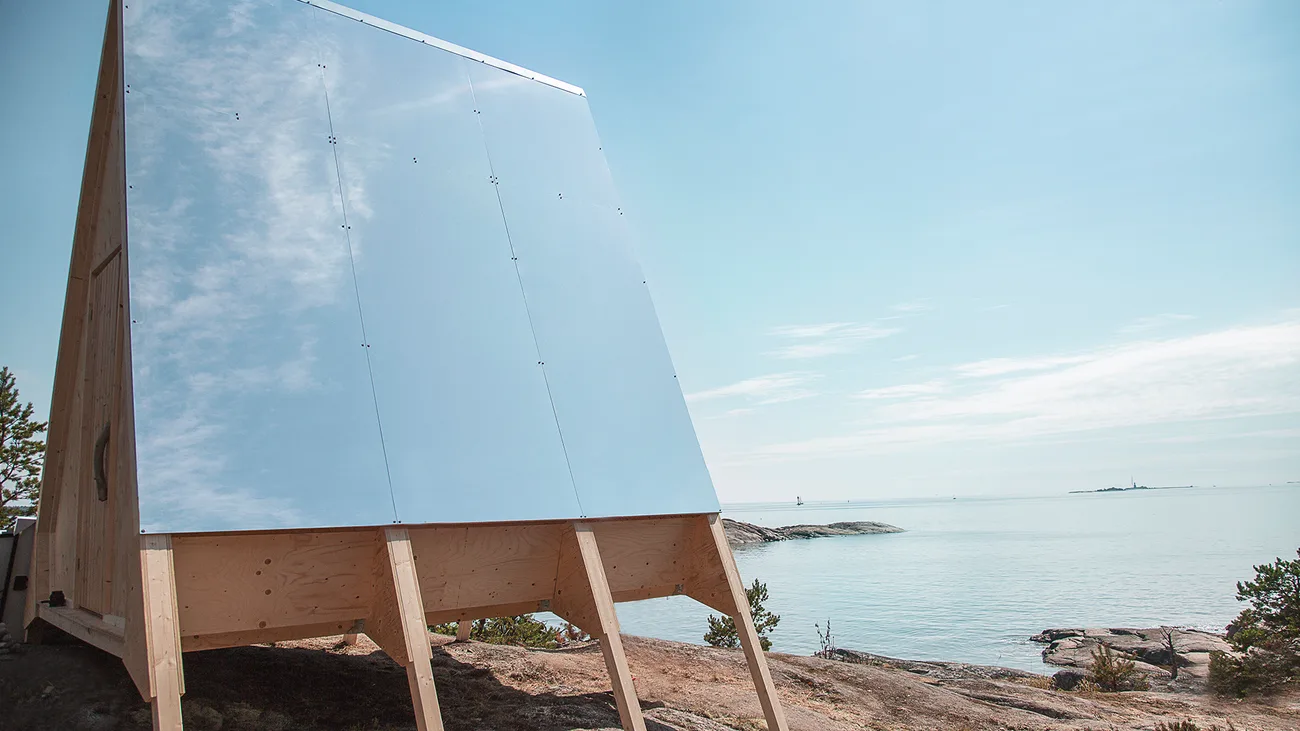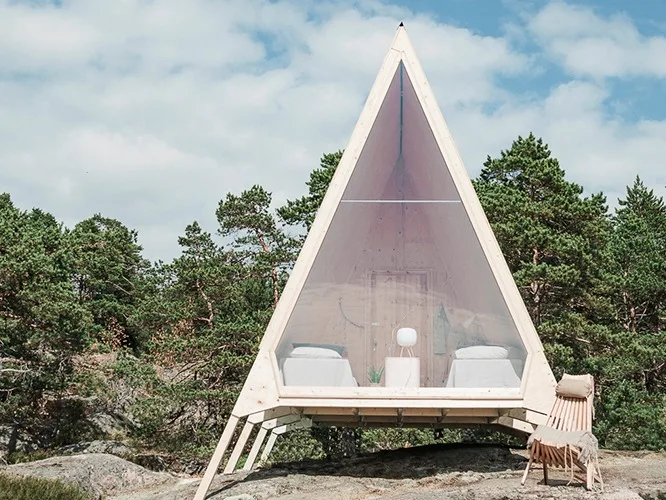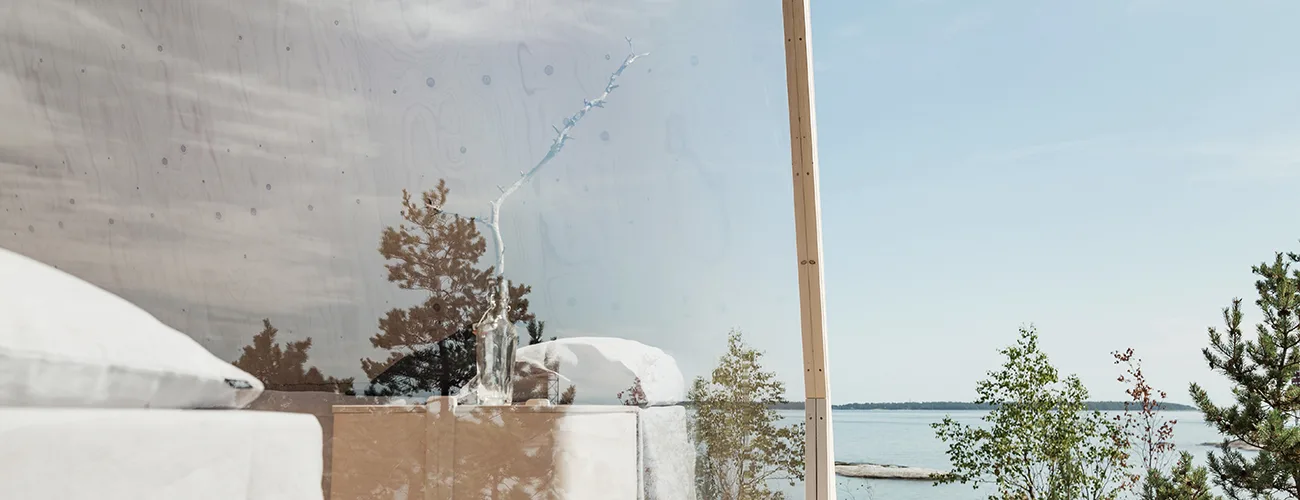
Sustainability
3 minute read
Take a look inside the Nolla cabin
With Journey to Zero, Neste is exploring ways to build a world with minimal emissions. As the first lap of the journey, the Nolla cabin has been designed and built on the ideal of clean living close to nature. But what other thoughts have been embedded into the structures of this grand design?
When building a cabin that will be set in a protected natural habitat and needs to consist of the most sustainable materials, the design process is all but simple. Designed by Robin Falck, this first prototype of the Nolla cabin was created to bring its visitors closer to nature and inspire a way of life that generates a minimal footprint.
Designed by Robin Falck, this first prototype of the Nolla cabin was created to bring its visitors closer to nature and inspire a way of life that generates a minimal footprint.
The first issue, of course, was to determine the size of the cabin. To make it functional and efficient in terms of energy consumption, the cabin had to be made as compact a space as possible. At 9m2, the cabin is the size of a small bedroom and does not require a separate construction permit.
To ensure the effective use of building materials and to decrease cut waste, the dimensions of the cabin were also designed to match the standard measurements of the chosen material, a Finnish plywood product Kerto LVL. A simplified version of the cabin could have been built entirely from recycled materials, but using local timber was a conscious decision to ensure both comfort and durability. Kerto LVL is a naturally sustainable product, because wood acts as a carbon sink throughout its life cycle.
The design of the cabin, as well as the “paws” that uphold it, make it easy to transport and assemble.

The design of the cabin, as well as the “paws” that uphold it, make it easy to transport and assemble. Transportation does not require any heavy machinery and due to its adjustable paws, the cabin can be erected without leaving any traces on the ground. Both of these features make it an ideal design for delicate environments, where groundwork cannot be done, and leaving a minimal trace in the surroundings is key.
A common challenge when building small spaces is that they overheat easily. In order to avoid installing energy-consuming air conditioning devices, traditional methods were used to make the cabin breathe. In addition, a mirrored surface on one side of the roof reflects heat and helps create a cool space inside. This feature could have been removed in order to make the cabin even more sustainable, but as the cabin is located on a sunny cliff in Vallisaari, every feature that helps prevent overheating was found necessary.

For safety reasons, the eye-catching, triangle-shaped window of the cabin is made out of polycarbonate. Neste is already able to offer renewable feedstock for the production of polycarbonate, instead of fossil crude oil based feedstock, and manufacturing bio-based polycarbonate plastic could be possible in the future, when there is enough demand for larger volumes.
The energy supply of the cabin is derived from renewable energy sources, making it entirely carbon neutral.
The energy supply of the cabin is derived from renewable energy sources, making it entirely carbon neutral. Solar panels are installed on one side of the roof, and a small stove by Wallas, reserved for cooking and heating, runs entirely on Neste MY Renewable Diesel™. In essence, the Nolla cabin concept is an experiment to explore how we could live on less and take more time to enjoy the nature around us. This thought guided every phase of the design process. The prototype is an inspiring example of living with a minimal footprint – bringing us closer to a carbon neutral world.
Credits:
Neste